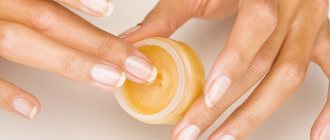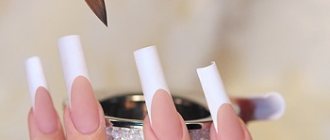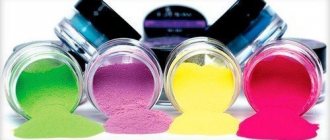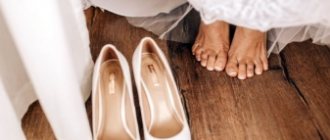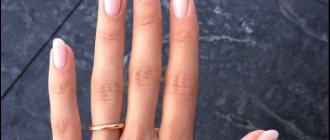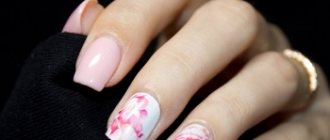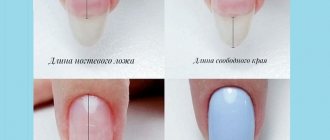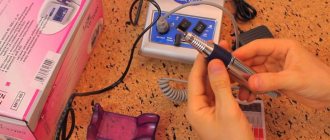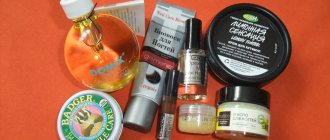A nail file is an indispensable manicure tool for every girl, and not just for a manicurist. It performs several functions at once: with a file you can remove the length of the nail plate, shape your nails, polish them to a shine, and lift the nail scales to improve adhesion between the artificial coating and the nail.
But when choosing such a simple, at first glance, tool, several questions arise at once:
- What material is better to choose a nail file from?
- What is abrasiveness and grit? What are they talking about?
- file shape. What is it for and which one is it intended for?
Well, let's find out.
Types of files by material
The first thing we encounter when choosing a nail file is the material from which it is made.
Disposable files
These nail files are made of polystyrene foam or multi-layer cardboard. The top is covered with tiny Teflon, quartz or granite chips. Disposable files are an ideal option for manicurists and beauty salons. From the name it becomes clear that they can only be used once. As a last resort, you can have a separate nail file for each client. Such files cannot be washed or sterilized; they deteriorate from moisture and high temperatures. But they are low cost, so one-time use is quite justified.
Set of classic nail files gray 100/180 g ParisNail 10 pcs/pack
Buff mini 100/180 white ParisNail 50 pcs
Set of nail files pink boat 100/180 g ParisNail 10 pcs/pack
Metal files
Reliable, versatile, durable. These files can be used for several years. Due to their low cost and long service life, this type of file has not lost popularity for several decades. However, experts do not recommend using them on the natural nail plate, especially if it is peeling and brittle. This can cause your nails to split even more. What are metal files used for? For working with thick nails in pedicure, as well as for correcting the shape and length of extended nails.
Glass files
Glass files allow you to carefully and accurately remove the length of the nail plate, give it the desired shape and not be afraid that your nails will begin to peel in the future. They are absolutely safe for natural nails. Glass files are resistant to high temperatures, so they can be sterilized in dry heat. When using, be careful not to drop this nail file, otherwise it may break.
Bohemia glass file, color 1202b, length 12 cm Solinberg
Bohemia glass file, colored 0902b, length 9 cm Solinberg
Ceramic files
Ideal for thin, brittle and peeling nail plates. These files are quite soft and do not allow natural nails to peel. They so neatly align the free edge of the nail plate that they even began to be called “healing”. This type of file is also suitable for treating the skin around the nails. But they are unlikely to be able to correct the shape of extended nails.
Files on a wooden base
Files on a wooden base are intended for pedicure. The base is rigid, so the files do not bend. At the same time, they are lightweight and very convenient to use. The abrasive is held in place by glue. Such files can be disinfected, so they can be used for individual use many times.
Medium wooden pedicure grater AT-251 Silver Star
Wooden grater PF-934-W METZGER
Foot grater SFP 009 YOKO
Laser files
Laser files are a new product in the nail industry, which confidently occupies a leading position. These files are made of plastic or metal. Holes are made on them in the form of a diamond-coated pattern, which is applied with a laser. Laser files perfectly “seal” the edges of the nail plate, thereby preventing it from delaminating.
Laser file 445 Solinberg
Laser file 14.8 cm Planet Nails
Laser file 443 Solinberg
Abrasiveness of nail files
In other words, abrasiveness is the hardness of the files, which is measured in grits. The more you grit, the softer the file; the less you grit, the harder it is. This indicator is usually indicated on the surface of the file or on the packaging. Quite often there are saw blades with two numbers, for example, 240/180. This means that one side of the file is softer and the other is harder.
Abrasiveness of artificial nail files
80-150 grit – hard files for artificial nails. These files are ONLY suitable for working on artificial nails. They can easily handle gel, acrylic, and tips. It is not recommended to use hard files on the natural nail plate.
Abrasiveness of files for extended and natural nails
150-240 grit – files of medium hardness. These files are suitable for both shaping and processing the length of the natural nail plate, and for processing extended nails.
Abrasiveness of files for preparing the nail plate
240-800 grit – buffs and polishers. Used to prepare the nail plate for artificial coating or nail extensions. They gently lift the scales of the nail plate, thereby improving the adhesion between the nail and the artificial material. They also allow you to remove gloss and unevenness of the nail plate.
Abrasiveness of nail polishing files
900-3000 grit – polishers. Polishers give nails a mirror shine. Mainly used for treating acrylic nails, but sometimes used for polishing natural nails.

